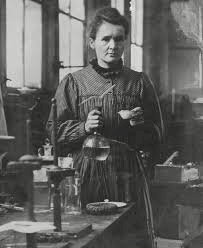Marie Curie | The Scientist Who Changed the World
Discover the inspiring journey of Marie Curie, the first woman Nobel laureate and pioneer of radioactivity. Explore her groundbreaking achievements in science, her legacy in medicine, and her lasting impact on modern physics and chemistry.

Marie Curie, a name synonymous with groundbreaking scientific achievements, remains an inspiration to millions. She was the first woman to win a Nobel Prize and the only person to win in two different scientific fields. Her discoveries in radioactivity revolutionized medicine and paved the way for modern physics. This blog delves into the life, accomplishments, and legacy of one of history’s most remarkable scientists.
Quick Info: Marie Curie
| Full Name | Maria Salomea Skłodowska Curie |
|---|---|
| Born | November 7, 1867, Warsaw, Poland |
| Died | July 4, 1934, Passy, France |
| Fields | Physics, Chemistry |
| Known For | Discovery of Radium and Polonium, Radioactivity |
| Education | University of Paris (Sorbonne) |
| Achievements | First woman to win a Nobel Prize, Nobel Prizes in Physics (1903) and Chemistry (1911) |
| Spouse | Pierre Curie |
| Children | Irène Joliot-Curie, Ève Curie |
| Key Idea | Pioneer of radioactivity |
Early Life and Education
Marie Curie was born Maria Skłodowska in Warsaw, Poland, to a family of educators. Her early education was influenced by her father, a mathematics and physics teacher, who instilled in her a love for science. Despite financial struggles, Marie excelled in school and dreamed of pursuing higher education.
In 1891, she moved to Paris to attend the Sorbonne, where she earned degrees in physics and mathematics. Her academic brilliance and resilience set the foundation for her future scientific endeavors.
Key Contributions to Science
Discovery of Radioactivity
Marie Curie’s groundbreaking work began with her research on uranium rays, building on the discoveries of Henri Becquerel. She coined the term “radioactivity” to describe the phenomenon. Her meticulous experiments led to the discovery of two new elements: radium and polonium, named in honor of her homeland, Poland.
Advancing Medical Science
Curie’s research on radioactivity revolutionized medical treatments. During World War I, she developed mobile X-ray units, known as “Little Curies,” which helped diagnose battlefield injuries. Her work laid the groundwork for modern radiation therapy used in cancer treatment.
Nobel Prizes
Marie Curie’s achievements were recognized with two Nobel Prizes:
-
1903: Nobel Prize in Physics (shared with Pierre Curie and Henri Becquerel) for their work on radioactivity.
-
1911: Nobel Prize in Chemistry for her discovery of radium and polonium.
Major Achievements
-
First Woman Nobel Laureate: Breaking gender barriers in science.
-
Discoveries of Radium and Polonium: Revolutionizing physics and chemistry.
-
Pioneer in Medical Applications: Introducing X-ray technology in medicine.
-
Established the Curie Institutes: Research centers in Paris and Warsaw dedicated to medical science.
Challenges and Perseverance
Marie Curie faced significant challenges as a woman in a male-dominated field. She struggled with limited resources and societal prejudice but persevered with unyielding determination. Her dedication to science often came at a personal cost, including her health, as prolonged exposure to radiation eventually led to her death.
Legacy and Impact
Marie Curie’s contributions have had a lasting impact on science and society. Her discoveries advanced our understanding of atomic physics and transformed medical practices. The Curie Institutes continue to lead in cancer research and treatment.
Honors and Recognition
-
First woman interred in the Panthéon in Paris for her own merits.
-
Several institutions, scholarships, and awards named in her honor.
-
Celebrated annually on Marie Curie Day (November 7).
Engaging Facts About Marie Curie
-
Curie’s notebooks and personal belongings are still radioactive and stored in lead-lined boxes.
-
She was the first woman to become a professor at the University of Paris.
-
Despite her fame, Curie lived modestly and remained dedicated to her research.
-
Her daughter, Irène Joliot-Curie, followed in her footsteps, winning a Nobel Prize in Chemistry.
Conclusion
Marie Curie’s life story is a testament to resilience, innovation, and dedication to science. Her discoveries not only advanced humanity’s understanding of the natural world but also provided practical applications that continue to save lives. As we honor her legacy, we celebrate a trailblazer whose work has inspired generations of scientists and dreamers.

 Deepak Maurya
Deepak Maurya 

































